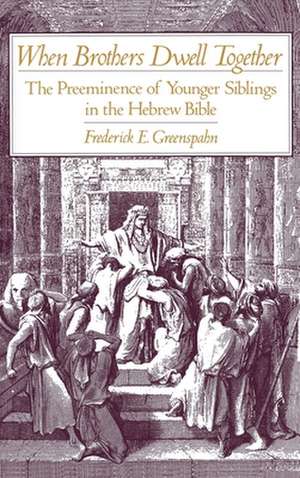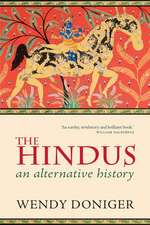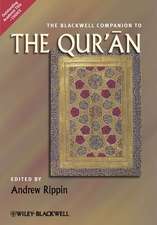When Brothers Dwell Together: The Preeminance of Younger Siblings in the Hebrew Bible
Autor Frederick E. Greenspahnen Limba Engleză Hardback – 19 mai 1994
Preț: 567.65 lei
Preț vechi: 815.26 lei
-30% Nou
Puncte Express: 851
Preț estimativ în valută:
108.63€ • 112.22$ • 90.41£
108.63€ • 112.22$ • 90.41£
Carte tipărită la comandă
Livrare economică 15-21 martie
Preluare comenzi: 021 569.72.76
Specificații
ISBN-13: 9780195082531
ISBN-10: 0195082532
Pagini: 208
Dimensiuni: 244 x 161 x 19 mm
Greutate: 0.44 kg
Editura: Oxford University Press
Colecția OUP USA
Locul publicării:New York, United States
ISBN-10: 0195082532
Pagini: 208
Dimensiuni: 244 x 161 x 19 mm
Greutate: 0.44 kg
Editura: Oxford University Press
Colecția OUP USA
Locul publicării:New York, United States
Recenzii
The book is lucidly written and provides a fresh and thought-provoking approach to an often neglected area of Old Testament research ... the book contains many stimulating insights and interesting observations.
He is to be congratulated from the outset for this methodological thoroughness and clarity. Masterfully following several avenues of inquiry and drawing out at every turn the fullest implications, he has provided a model of literacy, theological, and historical-critical interpretation. His discussion is remarkable also for its lucidity and for the thorough treatment of scholarly opinion.
He is to be congratulated from the outset for this methodological thoroughness and clarity. Masterfully following several avenues of inquiry and drawing out at every turn the fullest implications, he has provided a model of literacy, theological, and historical-critical interpretation. His discussion is remarkable also for its lucidity and for the thorough treatment of scholarly opinion.











